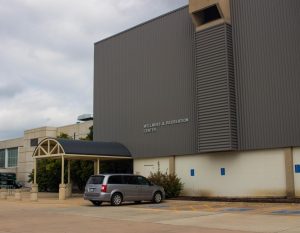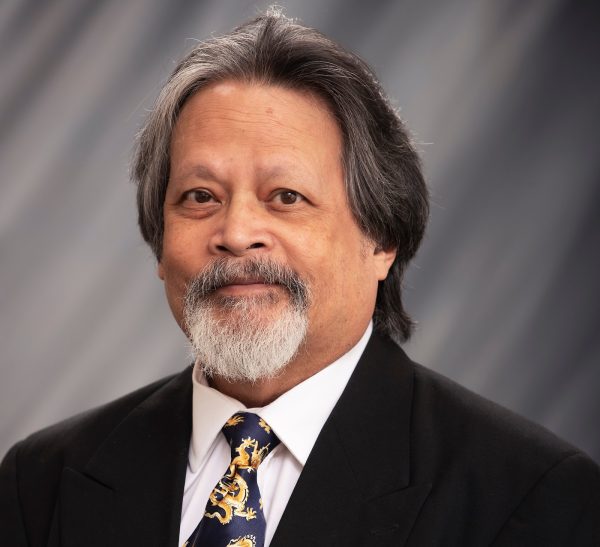WRC introduces intramural fee
Sep 16, 2019
For many students, intramural sports are a form of recreation, exercise and socialization.
“I’ve been here 25-plus years, and the camaraderie and the friendships that have been made through intramural sports are still friendships now,” said Cindy Klatt, Intramural Sports Coordinator. “These kids that were athletes in high school… still get to play, and they get to play the whole game.”
This year, however, that playing time comes with an additional fee.
The Department of Recreation Services has implemented a $20 per-semester fee for participation in intramural sports. The fee allows a student to participate in as many intramural sports and “special events” (such as one-day intramural tournaments) as they wish throughout the semester. New memberships are required each semester.
The fee is only one of the changes Recreation Services has made for the 2019-2020 school year in an effort to be “good stewards of the students’ money,” according to Chris Denison, Recreation Services Director.
“When we went through the budget process, this wasn’t just about increasing an intramural fee,” he said. “That was part of the full package.”
Denison cited departmental changes such as reduced building hours, increased usage fees for alumni, faculty/staff and event rentals, and energy-conscious practices to reduce utility costs.
Recreation Services was forced to re-evaluate its budget, according to Denison, because UNI enrollment has declined while the mandatory student recreation fee remained constant. This fee provides one-third of the department budget, and was, until this year, responsible for completely subsidizing intramural sports. Now, with declining enrollment leading to fewer dollars in student fees, Denison said, “our financial situation as a department has changed, as has almost every department on campus.”
“I heard it’s because they didn’t raise their tuition, but Iowa State and Iowa did,” said Nicholas Vail, a junior business administration major who participated in intramural softball this fall and plans to play intramural basketball as well.
Other students, such as sophomore psychology major Jaylee Knowles, voiced similar opinions. “I understood it since we’re having a tuition freeze,” she said, referring to the announcement made by the UNI administration earlier this summer that tuition would be held constant for the 2019-2020 school year. “And it’s great that we’re having a tuition freeze, so I expected there to be costs coming up in random places.”
However, Denison clarified that the fact that his department’s fee remained constant wasn’t solely because of the tuition freeze. In the budgetary process, he said, Recreation Services did not ask for an increase to its fee. However, if they had, the freeze might have intervened.
“We did not ask for an increase, and I don’t think anybody received an increase anyway. As far as I know, there were no departments who were given an increase on their fees last year,” Denison said. “The President decided not to have a tuition increase, which was approved by the Board of Regents, and there was a flat to all of the rest of the fees on campus. There was not going to be a raise to it.”
Denison emphasized that UNI’s mandatory student recreation fee, at $91.50 per academic year, is among the lowest in the nation. At Iowa State University, for example, the yearly recreation fee is $321.60. However, at ISU, student participation in intramurals and group fitness classes is included in that higher sticker price. According to Denison, it’s the difference between charging all students one price up-front and including all amenities, whether the individual student uses those amenities or not, and charging a lower price but adding “a la carte” fees. Recreation Services opted for the second choice.
“It’s kind of unheard of that you would have a lower recreation fee, less than $100, and not charge for intramurals and group activities and all the other things,” Denison said. “It’s a fine line to figure out what we can offer for the amount of budget we have.”
This isn’t the first time Recreation Services has implemented a fee for intramural sports. In 2013, the department began charging a team fee for participation, with the cost varying for each sport. Two years later, Denison said, the financial situation improved, allowing for the fee’s removal.
However, this time around, the fee is different. Previously, if a student played multiple intramurals, he or she would pay for each event. Now, the $20 semester membership covers a student’s participation in all activities for the full semester.
This new fee setup, Denison explained, was inspired by research he and his colleagues conducted in 2010. When 89 intramural basketball managers at UNI were surveyed about their responses to a proposed intramural fee, 28 out of the 89 said they would discontinue participation altogether, but nearly double that number said they would simply reduce participation.
This led Recreation Services to implement the per-semester fee, rather than the per-sport fee, which keeps cost low for multi-sport participants and caters to those who said they would “reduce participation” if a fee were implemented.
“We just thought it would be much easier and more accessible to more students if we had what we consider to be a lower fee that gives you access to the whole semester,” Denison said. He added that the department has striven to “keep [the fee] low enough that it’s not going to make people avoid playing or not be able to afford to play.”
For the most part, students agreed that the cost isn’t unreasonable.
“It’s not a horrible fee,” said Knowles.
“I was just like, ‘well, that’s 20 extra bucks down the drain,’ but it wasn’t a big deal,” said sophomore political science and philosophy major Sam Gingrich, who played intramural dodgeball last year and plans to do so again this year. “$20 isn’t terrible, but any more than that would be too much.”
Even so, some students have opted not to participate in intramurals in the face of the new fee. This includes Knowles, who played intramural volleyball last year but said she “probably won’t” this year, in part because of the fee.
“I tried to come back [to the administration] with something like maybe just a $10 fee if they were just going to do one event,” said Klatt, “but that was not accepted.”
The decline in numbers has made scheduling a challenge, according to Vail.
“They haven’t gotten very many teams,” he said. “For softball, they had to change everybody’s schedule and said, ‘Can you guys play this night instead because we don’t have any other teams signed up for this night?’ We were going to do ultimate Frisbee too, but we were the only team that signed up.”
Klatt said that golf and ultimate Frisbee have been cancelled, and there are fewer football and softball teams.
“Numbers are significantly less,” she said. “And I totally understand. When they’re used to not being charged, I’m sure they get a little perturbed.”
However, she noted that intramurals have been cancelled in past years due to lack of interest, even before the fee was implemented.
“I have learned that UNI kids are your basic sports kids,” she said. “They like their football, their basketball, their volleyball, their dodgeball, those types of activities.” Sports like kickball and Spikeball, she said, have previously failed to garner sufficient interest, even without the fee.
However, both Klatt and Denison agree that the fee has diminished participation. Klatt stated that at this time, 394 students have purchased the intramural membership for the fall 2019 semester, as compared to 1449 students who participated in intramurals throughout the entire fall 2018 semester. She noted, however, that this is early in the semester, and numbers may increase, since students can purchase a membership at any time throughout the semester.
Aside from cancelling sports, Klatt said, diminished participation impacts intramurals in another way.
“They want more games,” she said. “They want it worth the money they put into it, but what makes it harder is that when you don’t have as many teams, you can’t give them that many games.” She said double rounds of play, as well as a larger pool of teams for playoffs, will be used to increase playing time.
“We have heard that there are some people who are disappointed with the intramural fee who have decided that they’re not going to participate in intramurals, and that’s unfortunate,” Denison said. “We figured some of that was going to happen. We totally understand. We were all students trying to get through at one point as well, so we understand what implementing a fee means. I just hope that we get to a place that students understand that we work on behalf of the students [and] we’re trying our best to offer the best things that we can for the lowest cost.”


















